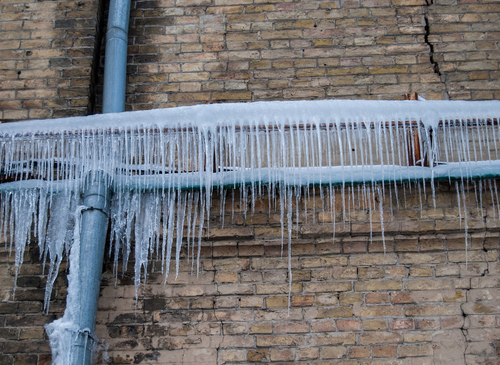Critical Strategies for Avoiding Frozen Pipes in Winter
Critical Strategies for Avoiding Frozen Pipes in Winter
Blog Article
Almost everyone will have his or her own perception involving How to Prevent Your Pipes From Freezing.

Winter can ruin your pipes, specifically by freezing pipelines. Right here's just how to avoid it from happening and what to do if it does.
Introduction
As temperature levels decline, the risk of frozen pipes boosts, potentially bring about costly repairs and water damages. Understanding just how to stop icy pipes is vital for homeowners in cold climates.
Comprehending Icy Pipelines
What triggers pipelines to freeze?
Pipes ice up when exposed to temperature levels listed below 32 ° F (0 ° C) for expanded durations. As water inside the pipes ices up, it increases, putting pressure on the pipeline walls and possibly causing them to rupture.
Risks and damages
Frozen pipelines can bring about water interruptions, home damage, and expensive repair work. Burst pipes can flooding homes and create substantial structural damage.
Indicators of Frozen Pipeline
Identifying icy pipes early can stop them from rupturing.
Just how to identify icy pipes
Look for reduced water flow from faucets, uncommon smells or sounds from pipelines, and noticeable frost on exposed pipes.
Prevention Tips
Protecting vulnerable pipes
Wrap pipelines in insulation sleeves or make use of heat tape to secure them from freezing temperatures. Focus on pipes in unheated or outside locations of the home.
Heating techniques
Keep interior areas properly heated up, particularly areas with plumbing. Open up cupboard doors to enable warm air to circulate around pipes under sinks.
Safeguarding Outdoor Plumbing
Yard hoses and outdoor faucets
Disconnect and drain pipes yard pipes prior to winter season. Mount frost-proof faucets or cover outdoor taps with shielded caps.
What to Do If Your Pipelines Freeze
Immediate activities to take
If you believe frozen pipelines, keep taps open up to ease stress as the ice melts. Make use of a hairdryer or towels soaked in warm water to thaw pipelines slowly.
Long-Term Solutions
Structural modifications
Think about rerouting pipes away from outside wall surfaces or unheated areas. Add additional insulation to attic rooms, cellars, and crawl spaces.
Upgrading insulation
Purchase premium insulation for pipes, attics, and wall surfaces. Appropriate insulation assists keep regular temperatures and decreases the threat of frozen pipes.
Conclusion
Preventing frozen pipelines calls for positive measures and quick actions. By recognizing the causes, indications, and safety nets, property owners can safeguard their plumbing during cold weather.
5 Ways to Prevent Frozen Pipes
Drain Outdoor Faucets and Disconnect Hoses
First, close the shut-off valve that controls the flow of water in the pipe to your outdoor faucet. Then, head outside to disconnect and drain your hose and open the outdoor faucet to allow the water to completely drain out of the line. Turn off the faucet when done. Finally, head back to the shut-off valve and drain the remaining water inside the pipe into a bucket or container. Additionally, if you have a home irrigation system, you should consider hiring an expert to clear the system of water each year.
Insulate Pipes
One of the best and most cost-effective methods for preventing frozen water pipes is to wrap your pipes with insulation. This is especially important for areas in your home that aren’t exposed to heat, such as an attic. We suggest using foam sleeves, which can typically be found at your local hardware store.
Keep Heat Running at 65
Your pipes are located inside your walls, and the temperature there is much colder than the rest of the house. To prevent your pipes from freezing, The Insurance Information Institute suggests that you keep your home heated to at least 65 degrees, even when traveling. You may want to invest in smart devices that can keep an eye on the temperature in your home while you’re away.
Leave Water Dripping
Moving water — even a small trickle — can prevent ice from forming inside your pipes. When freezing temps are imminent, start a drip of water from all faucets that serve exposed pipes. Leaving a few faucets running will also help relieve pressure inside the pipes and help prevent a rupture if the water inside freezes.
Open Cupboard Doors
Warm your kitchen and bathroom pipes by opening cupboards and vanities. You should also leave your interior doors ajar to help warm air circulate evenly throughout your home.

We are very eager about Winter Plumbing Precautions: Preventing Frozen Pipes and I'm hoping you enjoyed the new article. In case you appreciated our article plz make sure you remember to share it. Bless you for your time. Kindly check our site back soon.
Start Now Report this page